


|
Beowulf: Pronunciation of Old English | 
|
|
What is Beowulf?
Choose by Section Choose by Author Choose by Date |
The following information has been transcribed from Chickering, pages 29 to 36:
|
The following information has been transcribed from A. G. Rigg, pages 34 and 35 [I have had to indicate long vowels -- with a line over them -- by using the acute accent, or, in the case of æ, with an apostrophe]:
| -- begin transcription from A. G. Rigg -- |
Some Aids To Reading Old EnglishEven without any previous knowledge of Old English, a modern reader can recognize MnE [Modern English] words in their OE dress, once he is aware of certain equivalences. As already noted, OE þ and ð correspond to MnE th, and OE æ to MnE a or e, so that OE þæt, pæþ are clearly MnE that, path. A few other correspondences make the task of recognition easier: OE á > MnE [o:], spelled o, oa, so that OE stán > MnE stone.OE æ' often produces the MnE spelling ea, so læ'dan > MnE verb lead. OE y normally produces MnE i, so OE hyll > hill. OE sc(e) = MnE sh, so OE sceadu > MnE shade. OE c before e and i (and some other vowels) often produces MnE ch, so that OE cild = MnE child. Sometimes OE g before e and i produces MnE y, as in OE géar, MnE year, or OE giernan, MnE yearn. OE cg corresponds to MnE dg, so OE ecg > MnE edge. The h disappears from the OE initial consonant groups hl, hn, hr, so that hléapan > verb leap, hnutu > nut, hræfn > raven. The OE initial hw group, however, produces MnE wh, so that OE Hwá > who. Between vowels OE f was voiced and pronounced as MnE v, so that drífan > verb drive.ME [Middle English], followed by MnE, often used the letter o for OE u simply to avoid spelling confusion in words that had several "minims" (i, m, n, u, w); thus it is often possible to recognize a MnE word by substituting o for u, so that OE sunu, lufu can be seen to correspond to MnE son, love (see p. 20). Many words can be recognized more easily once they are stripped of their prefixes and suffixes. The perfective prefix ge- can always be ignored: OE gedrifen > driven. Many other prefixes, such as á-, be-, (not, of course, without meaning in OE) can be mentally removed in order to reveal a MnE word; thus, OE ábítan conceals MnE bite, or OE bemurnan without its prefix > MnE mourn. It is important to recognize the OE inflexional suffixes: -de, -ede, -ode, are past endings, so that geopenode, gemacode = open(ed), make(d) > made. The student will find his task much easier if he familiarizes himself at an early stage with the principal inflexional endings of nouns, adjectives, and verbs; he should also know the declension of the definite article and the personal pronouns, and the conjugation of the verb béon, 'be' as well as common auxiliary verbs such as cann, mæg, sceal, etc. A glossary of some very common Old English words, which the student is advised to learn as soon as he begins to read the Old English texts, is included at the end of the book. |
| -- end transcription from A. G. Rigg -- |
The following related information has been transcribed from Bruce Mitchell and Fred Robinson, pages 11 and 311:
| -- begin transcription from Mitchell and Robinson -- |
Preliminary Remarks on the Language§1 Alistair Campbell defines Old English as 'the vernacular Germanic language of Great Britain as it is recorded in manuscripts and inscriptions dating from before about 1100'. It is one of the Germanic group of the Indo-European family of languages. Those who are unfamiliar with this concept should read about it in one of the histories of the English language cited in the Bibliography.§2 There are four dialects distinguishable in the extant monuments -- Northumbrian, Mercian, Kentish, West-Saxon. The differences are apparent in the spelling; otherwise, of course, we should not know about them. After 900 West-Saxon was increasingly used as a standard written language. It is for this reason that, initially at any rate, you learn West-Saxon. But even here the spelling conventions were never as rigidly observed as they are in Great Britain or America today, where compositors, typists, and writers, in different parts of the country use the same spelling, no matter how different their pronunciations may be.
A Note on the Punctuation of Old English PoetryOne thing is certain about OE prosaists and poets, scribes and scops: they knew nothing of modern punctuation. Yet today modern punctuation is invariably used in OE texts presented to beginners and is probably the norm in scholarly editions. Why? The main reason appears to be the 'inadequacy' of the punctuation of OE manuscripts. This is less true of the prose, where some texts at any rate can be and have been presented with manuscript punctuation, than of the poetry where (as a glance at the facsimile of lines 1-33a of The Wanderer printed on page 270 will show) the punctuation can be almost non-existent. But there are good grounds for believing that the use of modern punctuation can distort both the syntax and the meaning of OE texts. |
| -- end transcription from Mitchell and Robinson -- |
The following information, written by Helmut Gneuss, has been transcribed from pages 28 and 29 of The Cambridge Companion to Old English Literature, second chapter, entitled "The Old English Language," [I have had to indicate long vowels -- with a line over them -- by using the acute accent, or, in the case of æ, with an apostrophe]:
| -- begin transcription from Helmut Gneuss -- | ||||||||||||||||||||||||||||||||||||
|
The speaker of Modern English who wants to read Old English texts aloud needs to observe the following points: 1. In accordance with the principles of Germanic accentuation, all words are stressed on the first syllable, except for words formed with a number of unstressed prefixes, especially ge-, a-, be-, for-, as in gewínnan 'conquer', forléosan [the é in the previous word was written with a line over it, and an acute accent over that line] 'lose', etc. 2. As opposed to Modern English and Modern French, Old English has no 'silent' letters; every written letter, including word-final -e and the initial consonants in OE cnáwan 'to know' or wrítan 'to write', has to be pronounced.
3. The phonetic value of a letter is not always that of Modern English; it is always that of Latin and therefore often that of other modern languages (Italian, French, German). This is particularly important for the pronunciation of the vowels, which is explained in the following table:
Long and short vowels must be kept distinct because they are 'phonemic', that is, they distinguish different words, as OE god 'God' and gód 'good'. Most text editions for beginners indicate vowel length by means of a superscript macron [in HTML we must use other conventions, such as acute accents, because the "superscript macron" is not available within the UTF-8 character set. The only way to get the precisely correct diacritics is to use an image of the text, but then the text size does not automatically adjust (unless you use JavaScript to detect the text size and switch the images) and the text cannot be searched or cataloged.], although no such convention was followed systematically by Anglo-Saxon scribes. Diphthongs are usually stressed on their first element.
The pronunciation of most of the consonants corresponds to that of Modern English. Exceptions are:
|
||||||||||||||||||||||||||||||||||||
| -- end transcription from Helmut Gneuss -- |
Here are some selected pages from Stephen Pollington's 1997 book, First Steps in Old English.
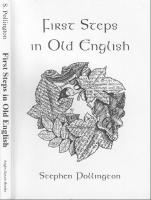 |
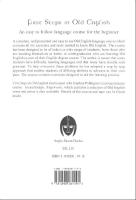 |
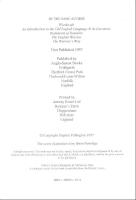 |
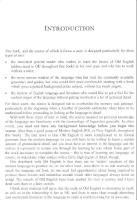 |
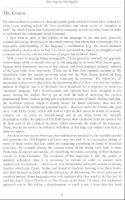 |
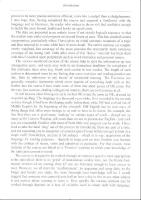 |
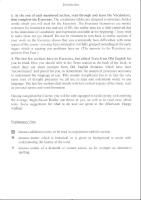 |
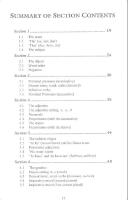 |
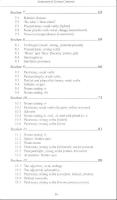 |
|
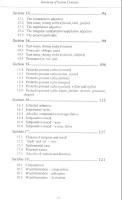 |
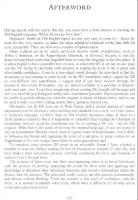 |
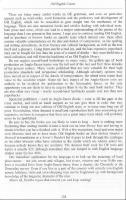 |
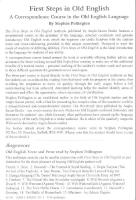 |
The following is a complete reproduction of Alan J. Bliss's short book, An Introduction to Old English Metre.
 |
 |
 |
 |
 |
 |
 |
 |
 |
 |
 |
 |
 |
 |
 |
 |
 |
 |
 |
 |
 |
 |
 |
 |
 |
 |
 |
 |
 |
 |
 |
 |
 |
 |
 |
 |
SydAllan@gmail.com -- https://docs.google.com/leaf?id=0B2H1mtZZCfMDYzIxNzhhOGMtZmE5ZC00YzQyLTgxMWMtNTA5ZjNjYmIwMmMx&hl=en |